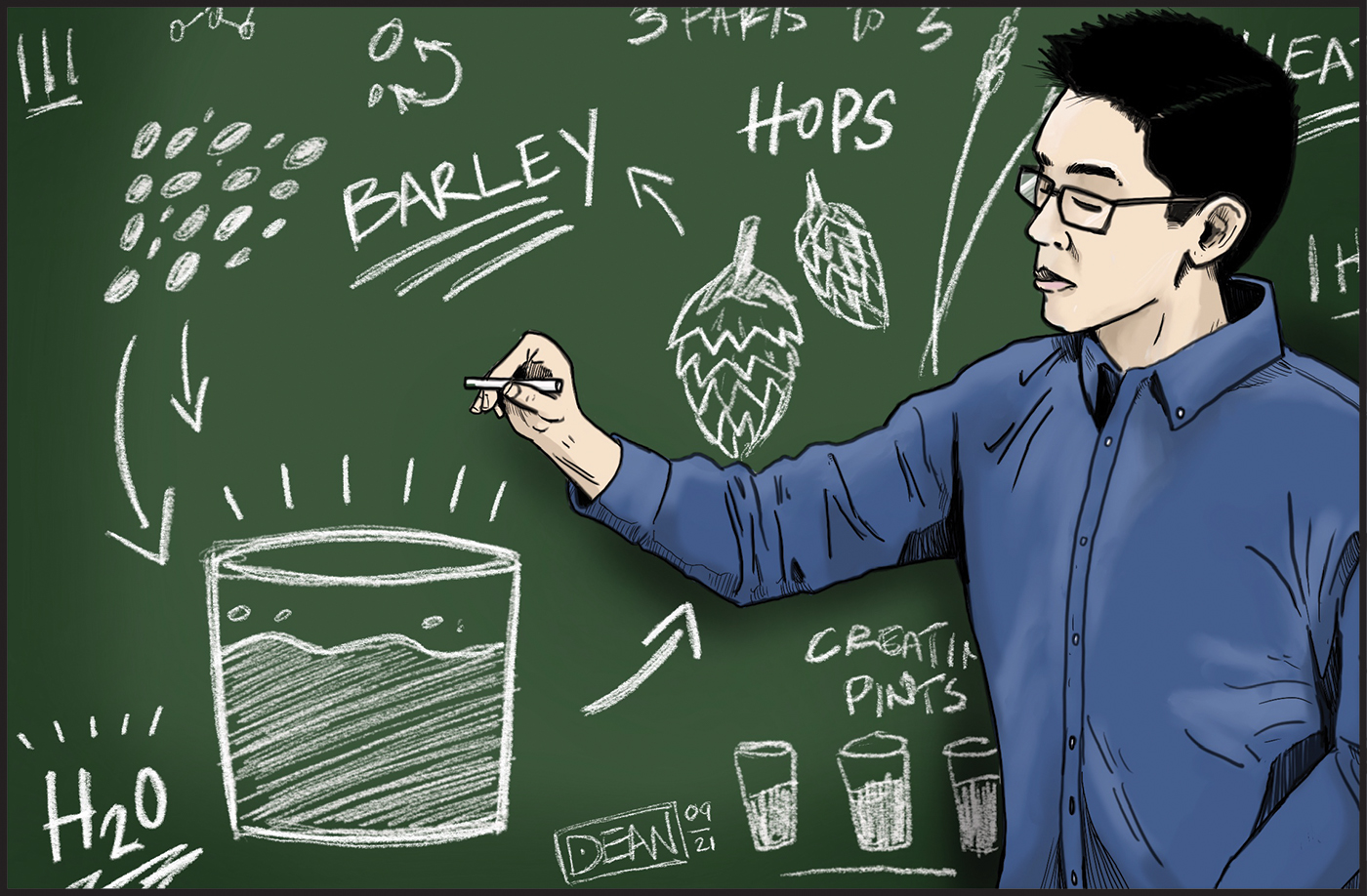
An Endless Palette: Designing Beers for Every Palate
Beer & Spirits
Brewers have a functionally infinite palette, a vast array of “colors” available to “paint” with. The process isn’t that different from visual art, really. It’s essentially an overlapping space between design and technique, and every decision affects every drink in your glass.
Water, malted grain, hops and yeast—the four classic ingredients of beer alone have nearly endless possibilities. Brewers are often only limited by their imaginations. Here, a few basic ideas will help you understand beer’s design a little better. We’ll proceed in the same order as the brewing process: mash malted grain, boil with hops or other seasoning and ferment with yeast.
Malt is often called the “soul of beer.” Most beers constitute one “base malt” comprising 50–98% of the total weight, with some amount of modified “specialty malts” making up the balance. The base malt itself is the main source of fermentable sugars that will later be made into alcohol but is also a large source of flavor, especially in simpler beers. The specialty malts add an outsized proportion of intense flavor, adding color and roasted, toasted or sweet flavors from relatively small inclusions.
Hops are all about intense flavors like tropical fruit, citrus, pine resin or herbs. Without their balancing bite, all beer from a crisp lager to a dark stout would be sweet from its malt foundation. Depending on the desired outcome, hops can be boiled for extended periods to bring out their bitterness, or added post-fermentation so their delicate, oil-borne flavors remain fully intact.
Finally, the sugar-rich and well-seasoned concoction is ready for fermentation. Ale and lager yeast are two different species of Saccharomyces, whose myriad strains add different mouthfeels and other flavor compounds like fruity esters and spicy phenols. But a host of wild yeasts and bacteria can all contribute to the final goal, especially in sour beers. A brewer must carefully select strains of these microscopic organisms to complement their final vision for the beer, choosing one or a mix that either lets the other ingredients shine or seizes center stage for itself.
All these choices contribute to every beer. Adjusting these proportions can create the countless different beer styles we have today, or result in an entirely new brew!
